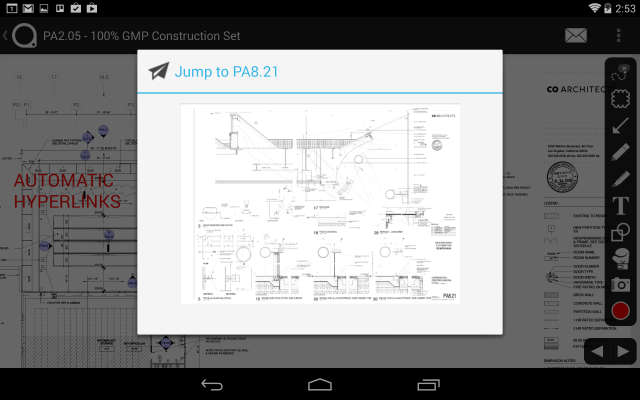For the last two years, Y Combinator alum PlanGrid has helped modernize the construction industry by moving blueprints to tablets. After originally launching on the iPad, the company will now offer all the same features and capabilities on a wide variety of Android tablets.
At the end of the day, PlanGrid’s mobile app enables construction teams to cut paper out of their blueprint plans. Instead of printing out new versions of a blueprint every time it gets updated and sending them out to all the people on site, images can be uploaded and then viewed on tablets.
By moving blueprints off paper and onto tablets, PlanGrid helps to save construction teams a ton of money. But it also enables PlanGrid users to more efficiently use the blueprints they have, and more quickly update or make changes to them.
Last summer it added hyperlinking between plans stored on the app. Users can also mark up blueprints and quickly share changes or annotations with others.
Since launch, the company has been used on more than 125,000 construction projects, and more than 20,000 blueprints are uploaded every day to its network.
But the requirement for construction teams to invest in iPads and iPads only held the company back, to a certain extent. Android tablet share has grown incredibly over the last few years, from 8 percent to 62 percent. With a growing number of construction teams using Android tablets, PlanGrid also wanted to be there as well.
After a year working on its Android app, PlanGrid has finally launched on the Google Play store. That will give different construction teams more options — so that crews who want less expensive tablets or who want larger tablets can find something that fits them.
To get more people signed up, the company is running a small promotion for those who wish to use Android to ship them a 16 GB Nexus 7″ tablet with a 2-year subscription to its $400 “nailgun level” service.
PlanGrid has raised $1.1 million in seed funding from a group of investors that includes Box, 500 Startups, Y Combinator, and Navitas Capital, as well as angels such as Suleman Ali, Sam Altman, Paul Buchheit, Matt Cutts, Ray Levitt. The company now has about 30 employees and is based in San Francisco.
